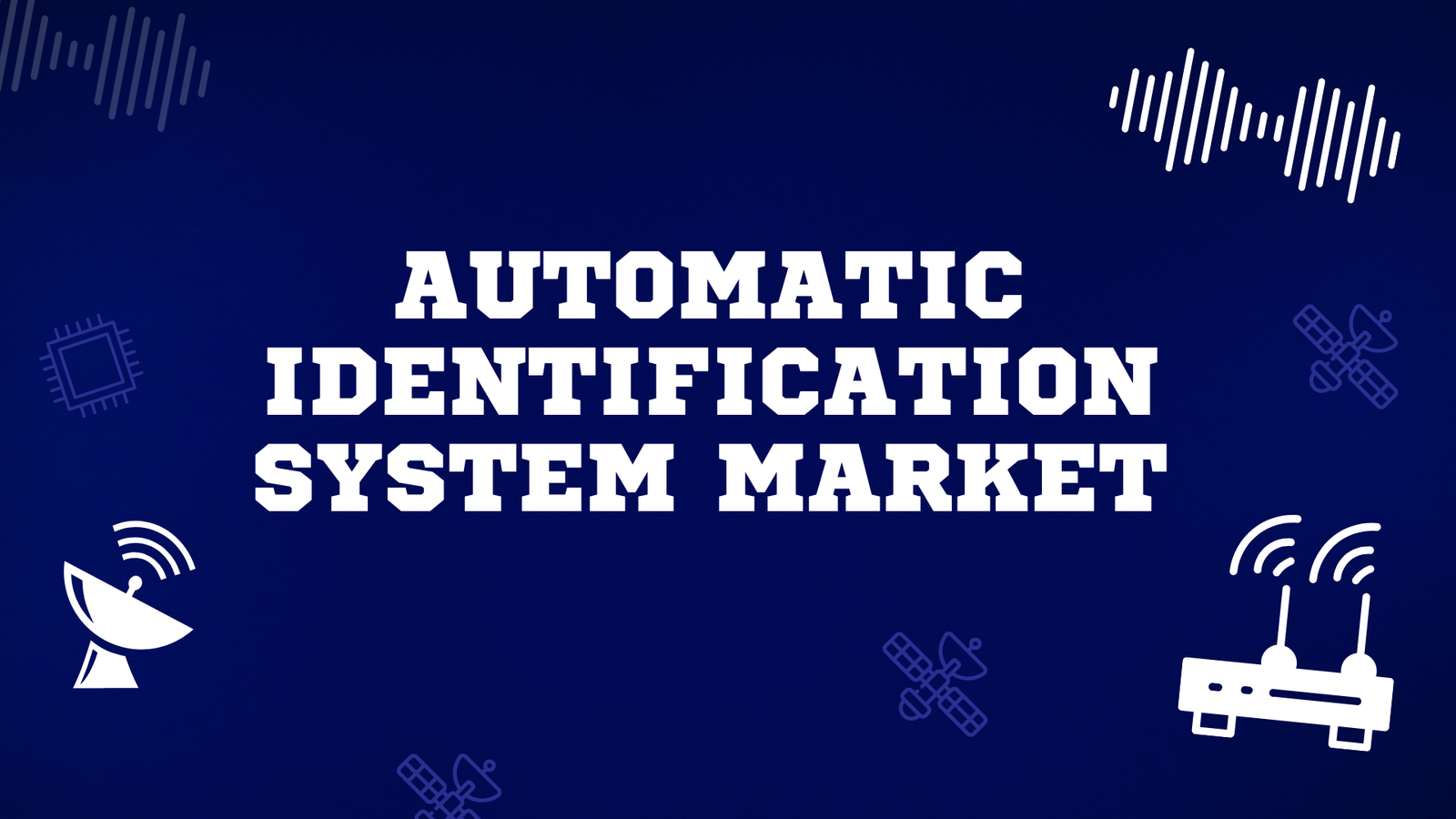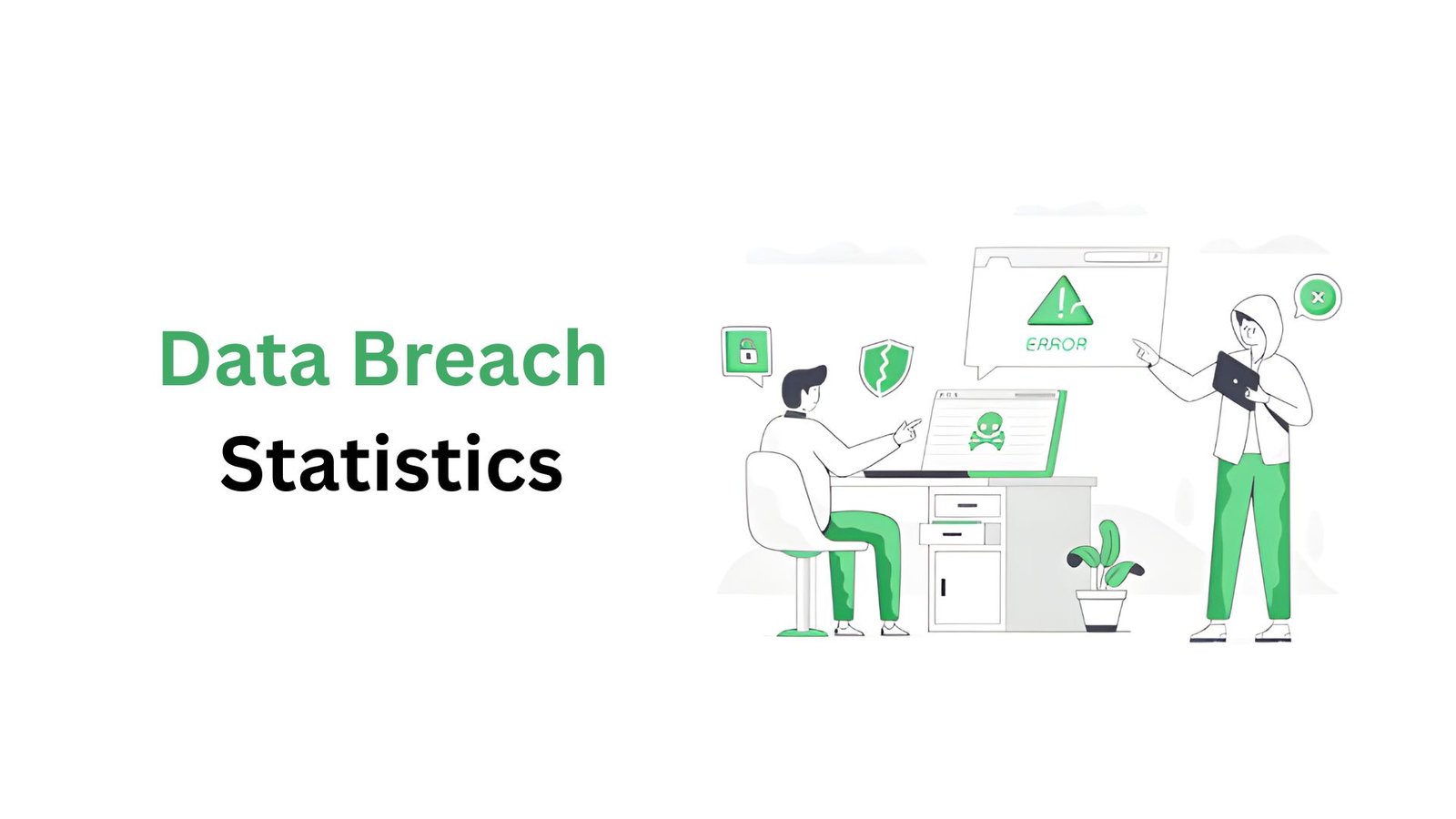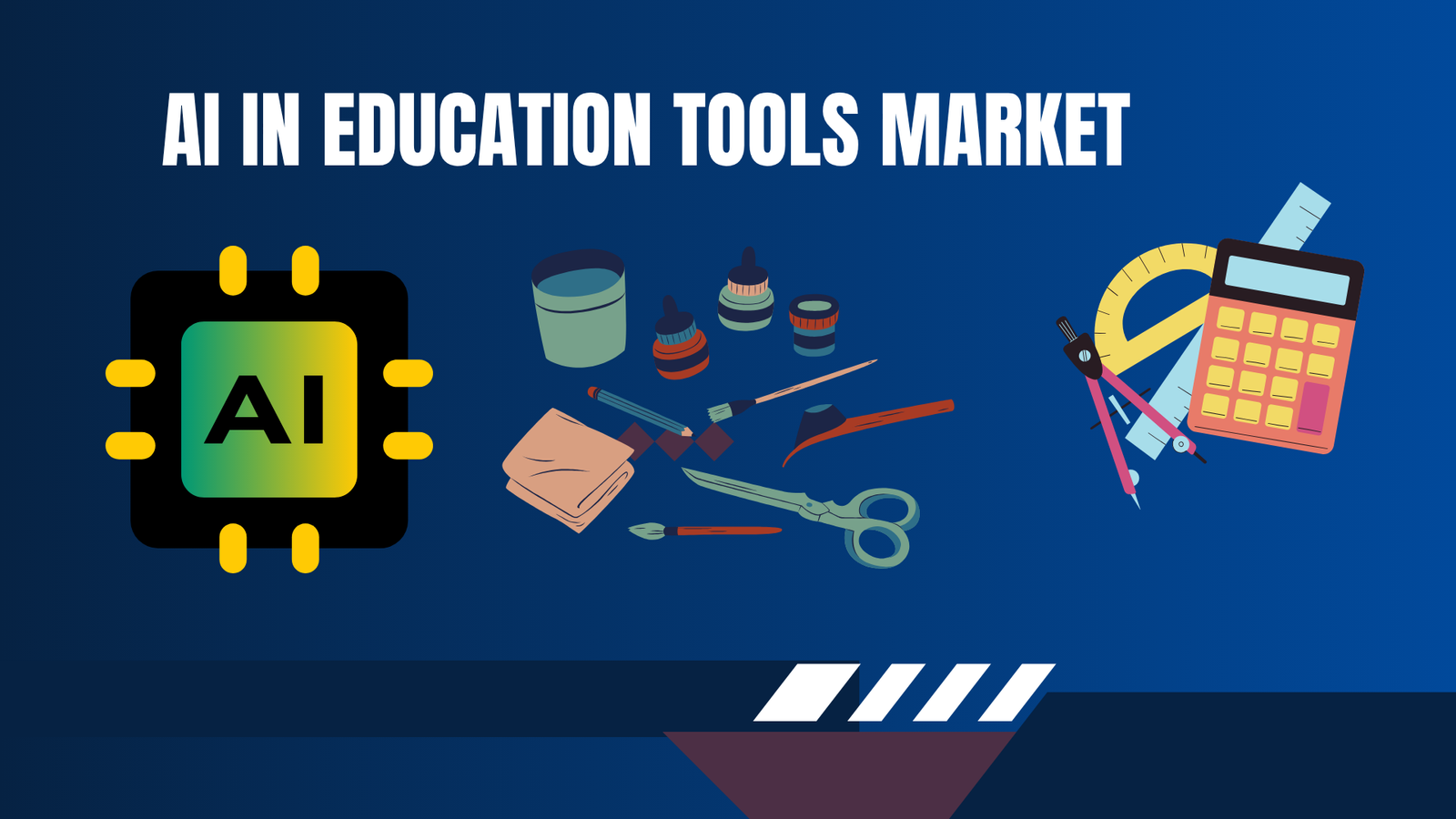Creator Economy Market to Reach USD 1,072.8 Billion By 2034
Updated · Nov 28, 2025
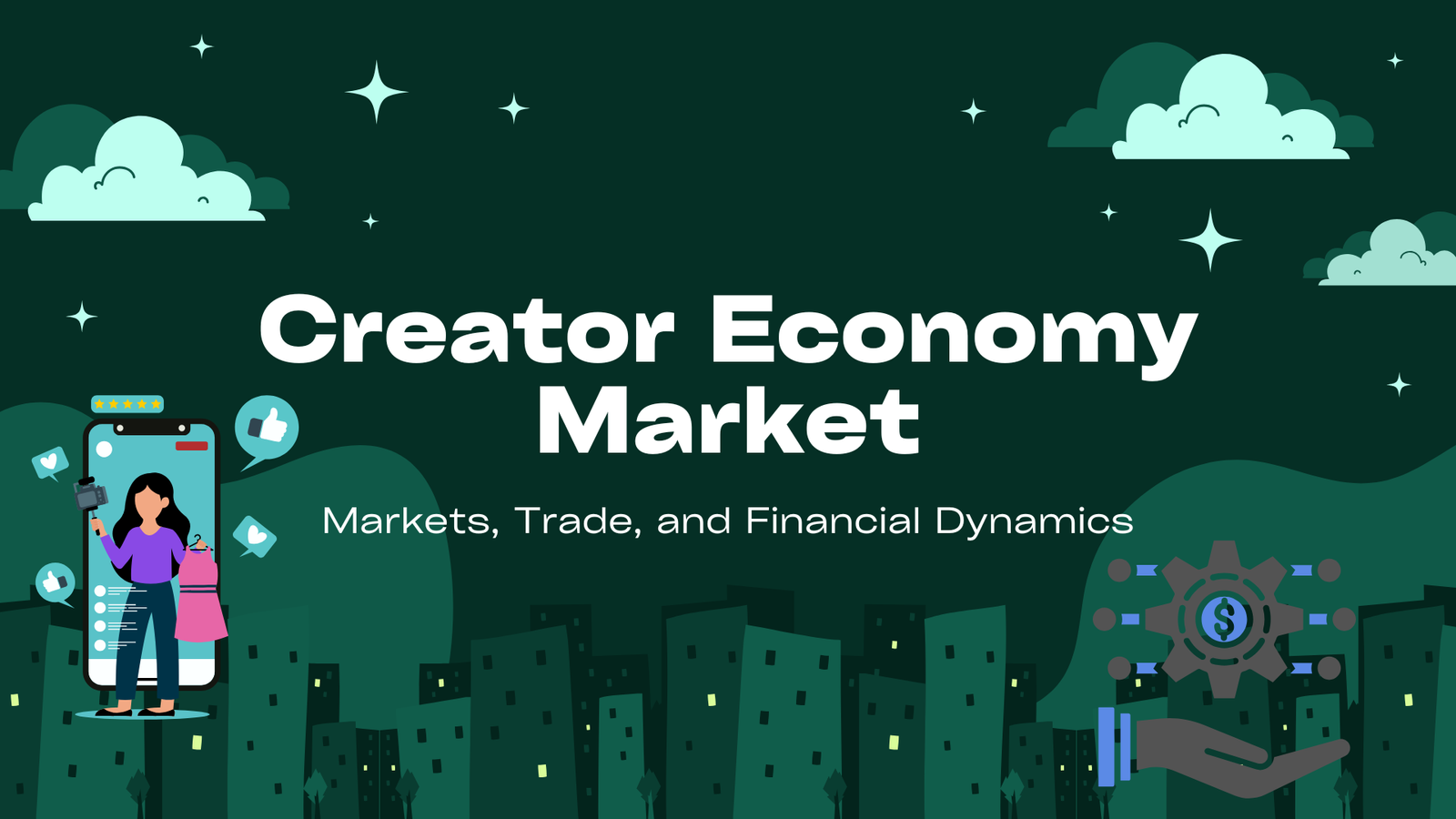
WHAT WE HAVE ON THIS PAGE
Creator Economy Market Size
According to Market.us, The Global Creator Economy Market is projected to reach USD 1,072.8 billion by 2034, rising from USD 149.4 billion in 2024 at a CAGR of 21.8% between 2025 and 2034. In 2024, North America led the market with over 37.4% share, where the United States stood out by recording a valuation of USD 50.9 billion, underscoring its strong influence in shaping global creator-driven platforms and monetization models.
The creator economy encompasses individuals who produce and distribute digital content directly to audiences through software‑driven platforms. These platforms connect creators, users, and advertisers by providing tools and monetization mechanisms. Creators include influencers, video producers, writers, digital artists, podcasters, and independent professionals. Revenue is generated through advertising, sponsorships, subscriptions, affiliate links, product sales, and other monetization strategies.
The main driving factors of the creator economy market include increased internet and smartphone penetration, advances in content creation tools, and the growth of regional language internet users. Younger generations are actively participating as creators, supported by platforms offering direct monetization opportunities. The expansion of digital platforms, rising content consumption, and the shift toward personalized and authentic content also fuel market growth.
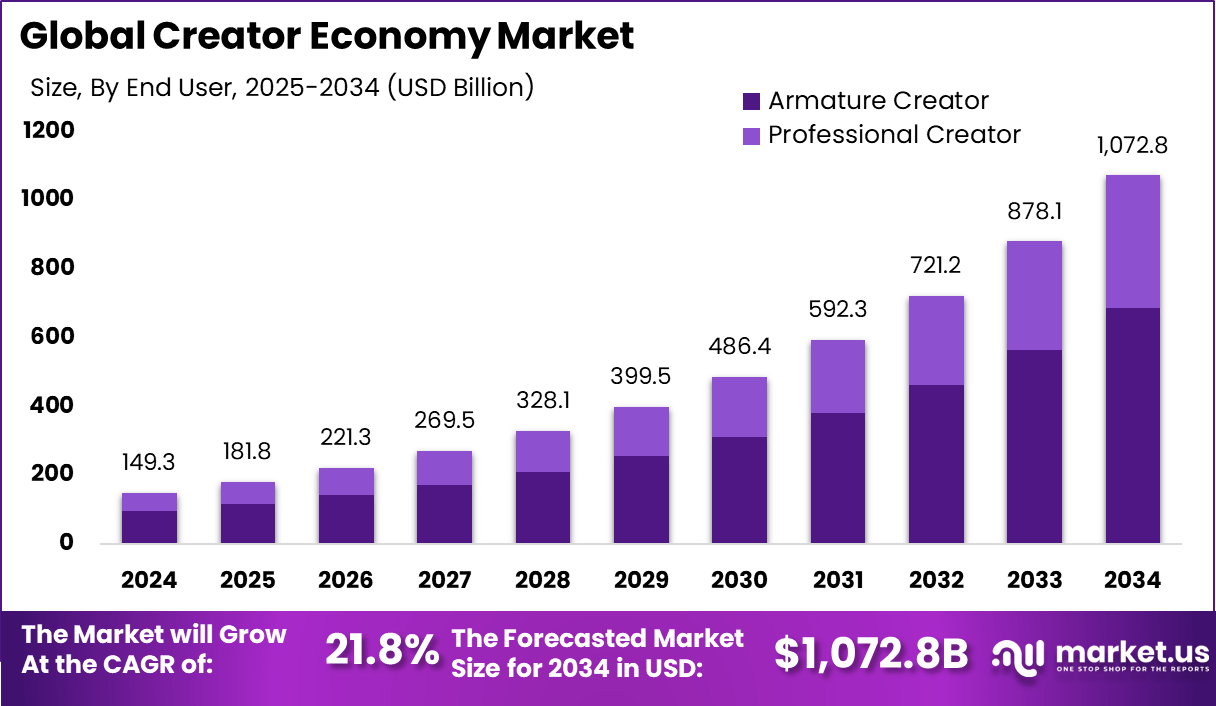
According to Exploding Topics, The global creator economy is currently valued at $191.55 billion, underlining its growing impact on industries worldwide. Merchandise companies contribute more than $500 million in annual revenue, while some platforms have achieved as much as $5.2 billion, reflecting their role in empowering creators. This ecosystem has become a vital commercial force, where creators are increasingly positioned as both entrepreneurs and cultural influencers.
A closer look at revenue patterns highlights the heavy reliance on brand deals, with about 68.8% of creators depending on them as their main source of income. By comparison, only 7.3% rely primarily on advertising, which points to the limitations of traditional models. However, alternative income streams are expanding, with affiliate marketing up 9%, advertising revenue rising 15%, and merchandise sales increasing 4%.
Investment opportunities in this market are substantial. Venture capital and private equity are actively funding startups and platforms that support content creation, distribution, and monetization. Growing interest in influencer marketing and brand partnerships further drives investments. Regions with high social media usage and digital adoption, such as North America and Asia Pacific, present significant growth potential.
Key Insight Summary
- 27.8% share is led by Social Media Platforms, making them the most preferred base for creators to grow and engage audiences.
- 24.5% is held by Video Streaming Platforms, supported by the demand for long-form, high-quality content.
- 23.8% share belongs to Video content, confirming strong consumer preference for visual storytelling.
- 18.3% is captured by Music content, boosted by short-form audio and independent artist growth.
- 23.5% share is driven by Brand Collaborations, emerging as the top monetization channel for creators.
- 20.9% comes from Advertising Revenue, which remains vital but ranks slightly behind direct brand deals.
- 64.1% of creators are Armature creators, showing low barriers to entry and the rise of side-hustle culture.
- 35.9% are Professional creators, reflecting a structured, career-driven segment of the economy.
- The U.S. Creator Economy stood at USD 50.9 Billion in 2024, expanding at a strong 19.3% CAGR, highlighting rapid momentum.
- North America leads globally with 37.4% share, backed by mature platforms, strong monetization tools, and advanced digital infrastructure.
Emerging Trend
AI and Virtual Influencers Transforming Content Creation
The creator economy in 2025 is being revolutionized by the integration of artificial intelligence and the rise of virtual influencers. AI tools are streamlining content creation through automation, smart editing, and personalized audience targeting, enabling creators to produce more high-quality content efficiently.
Virtual influencers, AI-generated digital personas with authentic storytelling abilities, are gaining popularity by engaging audiences without human limitations. These technological advances expand creative possibilities and broaden the definition of what it means to be a creator, attracting new participants to the ecosystem.
This trend is also shifting the way brands engage with creators, as virtual influencers now collaborate with major companies and promote products authentically. The power of narrative transcends the physical presence of a creator, proving that compelling stories and emotional connections can be built with AI-driven characters. By pushing creative boundaries, AI and virtual influencers are elevating content diversity and engagement, firmly establishing themselves as key components of the creator economy’s future.
Driver Analysis
Increasing Social Media Adoption and Monetization Ecosystems
An undeniable driver shaping the creator economy is the proliferation of social media platforms such as TikTok, Instagram, and YouTube that provide an expansive global reach. Billions of users interact with creator content daily, creating vibrant communities and demand for fresh, relatable digital media.
Social platforms have not only become the primary channels for content distribution but also feature integrated monetization tools like live tipping, paid subscriptions, and shoppable content, empowering creators to earn revenue directly from their audiences. Alongside platform growth, the rise of creator-centric marketplaces, branded content collaborations, and e-commerce integrations supplements income streams and incentivizes participation.
The more robust these monetization frameworks become, the more creators are encouraged to invest time and resources into their crafts. This dynamic fuels sustained expansion and innovation within the creator economy, making it an essential pillar of modern marketing and digital entrepreneurship.
Restraint Analysis
Market Saturation and Visibility Challenges
Despite rapid growth, intense competition and market saturation pose significant restraints for many creators. The low barriers to entry mean millions of new creators join platforms each year, flooding content supply and fragmenting audience attention. Standing out requires a unique value proposition, consistent content innovation, and strong personal branding, obstacles some emerging creators struggle to overcome.
Additionally, algorithmic changes on platforms present ongoing unpredictability regarding content visibility and monetization potential. Creators dependent on organic reach risk sudden drops in engagement due to shifts in platform policies or discovery algorithms. This volatility breeds financial uncertainty and burnout, challenging creators to continuously adapt their strategies while managing inconsistent incomes.
Opportunity Analysis
Expansion into Niches and Web3 Monetization
The creator economy offers rich opportunities through focus on niche verticals and leveraging emerging decentralized models. Specialized content areas such as gaming, wellness, education, and niche hobbies attract dedicated audiences willing to pay for exclusive access, merchandise, or experiences. Micro-subscriptions and community-driven monetization formats deepen engagement and create steady revenue for creators who can establish authentic connections with their followers.
At the forefront of innovation, Web3 technologies like blockchain, NFTs, and tokenization are reshaping creator monetization by enabling direct, transparent value exchanges without intermediaries. Creators can sell digital assets, launch tokenized communities, and offer unique collectible experiences, building sustainable income streams beyond advertising or brand sponsorships. This decentralized approach enhances creator ownership and audience loyalty, signaling an evolution toward more creator-controlled economic ecosystems.
Challenge Analysis
Income Instability and Regulatory Complexities
Creators face ongoing challenges including unstable income due to fluctuating ad revenue, sponsorship availability, and platform policy changes. Inconsistent financial returns make long-term planning difficult and increase pressure to diversify revenue streams, which can lead to fatigue. Emerging creators especially struggle to monetize effectively without substantial followings or high engagement metrics.
Moreover, intellectual property rights, data privacy regulations, and varying platform rules complicate content protection and cross-border monetization. Frequent shifts in eligibility criteria for monetization features require creators to remain agile and compliant. Navigating these legal and policy environments requires significant time and resources, often limiting scalability for small or independent creators.
US Creator Economy Market Size
The US creator economy market reached a value of USD 50.9 billion in 2024 and is forecast to rise significantly, from USD 123 billion in 2029 to about USD 297.3 billion by 2034, reflecting a projected CAGR of 19.3% between 2025 and 2034.
This rapid expansion highlights the country’s strong position in shaping the global creator landscape, supported by a large base of digital-native consumers and an advanced ecosystem of monetization platforms. The growth trajectory also reflects the increasing shift toward diversified income streams, including merchandise, subscriptions, and affiliate marketing, which are complementing traditional brand sponsorships.
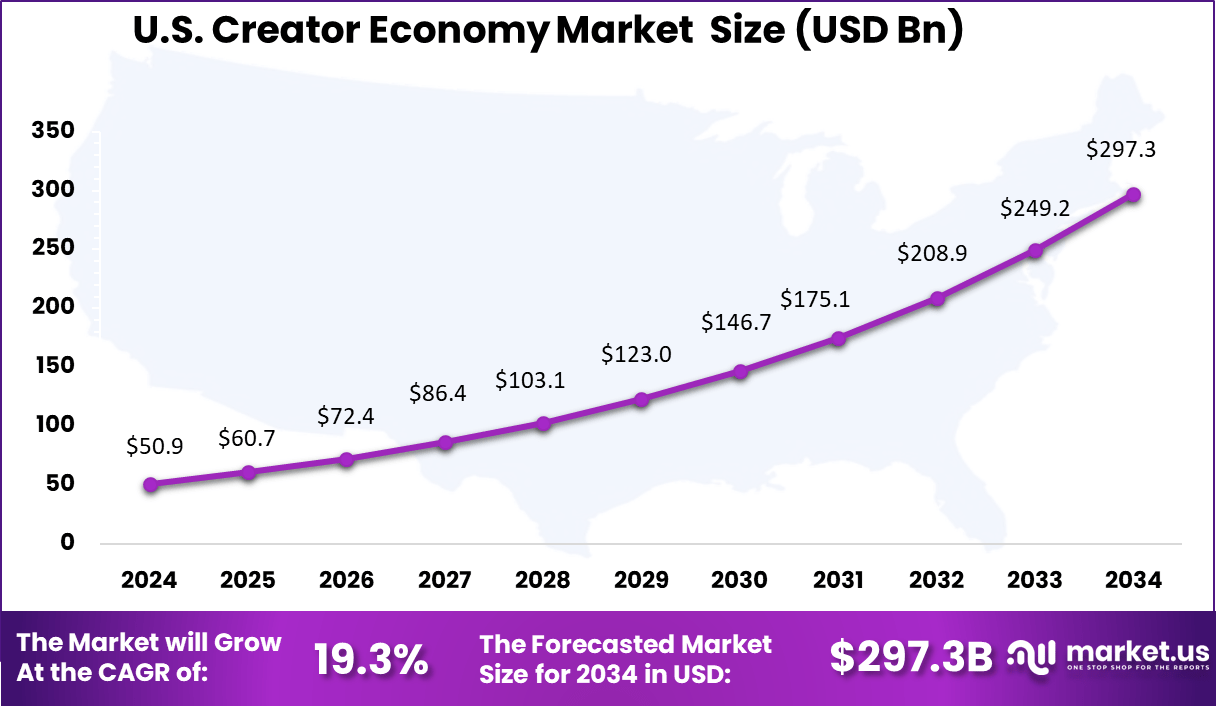
In 2024, North America as a whole secured a dominant market position, capturing more than 37.4% of global revenue, amounting to USD 55.8 billion. This leadership was sustained by factors such as robust digital infrastructure, near-universal smartphone penetration, and one of the most active social media populations worldwide. The region’s dominance is further reinforced by the early adoption of new creator tools, supportive regulatory frameworks, and a culture of high digital engagement, which together continue to attract investment and provide creators with a fertile environment for long-term growth.
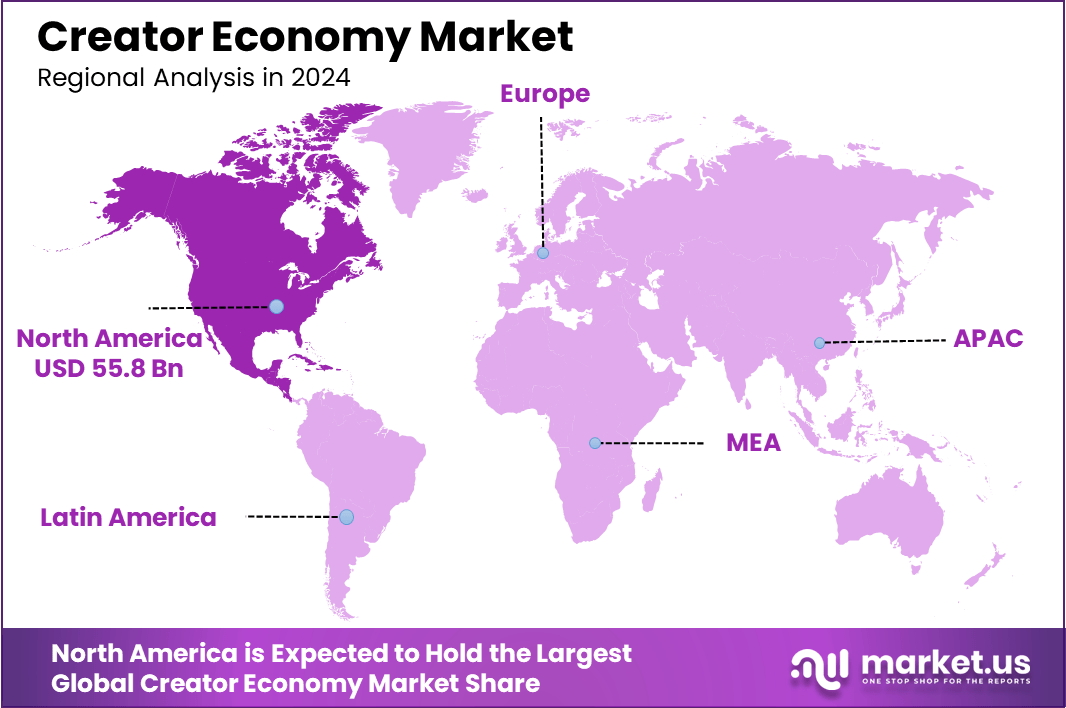
Creator Economy Market Share by Region (%), 2019-2024
| Country | 2019 | 2020 | 2021 | 2022 | 2023 | 2024 |
|---|---|---|---|---|---|---|
| The US | 92.2% | 92.0% | 91.8% | 91.6% | 91.4% | 91.2% |
| Canada | 7.8% | 8.0% | 8.2% | 8.4% | 8.6% | 8.8% |
Key Market Segments
By Platform
- Social Media Platforms
- Content-Sharing Platforms
- Video Streaming Platforms
- Audio Platforms
- Gaming Platforms
- Others (E-commerce Platforms, etc.)
By Content Type
- Video
- Written
- Gaming
- Music
- Photography, Art, and Memes
- Audio
- Others (Educational, etc.)
By Monetization Method
- Advertising Revenue
- Subscriptions
- Donations and Tips
- Affiliate Marketing
- Brand Collaborations
- Merchandise
- Others
By End User
- Professional Creator
- Armature Creator
Top Key Players in the Market
- Alphabet Inc.
- Company Overview
- Product Portfolio
- Financial Performance
- Recent Developments/Updates
- Strategic Overview
- SWOT Analysis
- Note (*): Similar analysis will be provided for other companies as well.
- Amazon.com, Inc.
- ByteDance
- Meta Platforms
- Spotify AB
- Netflix Inc.
- Snap Inc.
- Pinterest, Inc.
- X Corp.
- Canva
- Roblox Corporation
- Etsy, Inc.
- Patreon, Inc.
- Discord Inc.
- Substack Inc.
Sources

Barry loves technology and enjoys researching different tech topics in detail. He collects important statistics and facts to help others. Barry is especially interested in understanding software and writing content that shows its benefits. In his free time, he likes to try out new healthy recipes, practice yoga, meditate, or take nature walks with his child.


